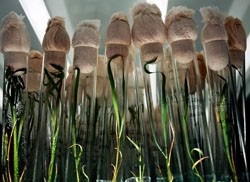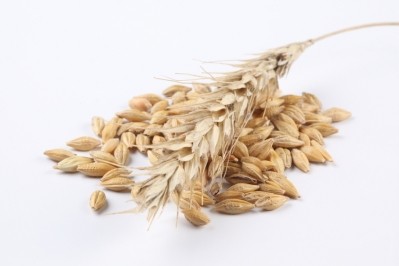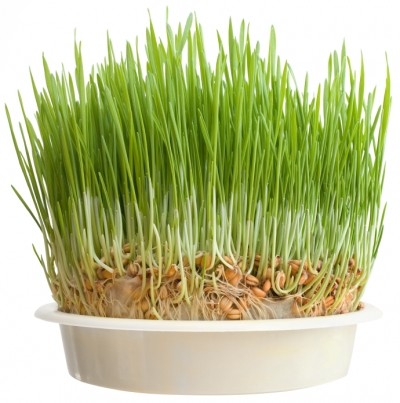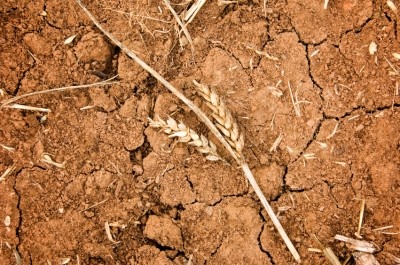Milling & Grains bite-size news
Heat-tolerant plant breeding, non-traditional wheat, origin tests, organics

Heat-tolerant crop research needs improvement
Heat tolerance is poorly understood and there is limited access to precise phenotyping techniques and bottlenecks in breeding – issues which must be addressed amid increasing global temperatures, warn researchers.
Published in Plant Breeding, researchers from the Indian Institute of Pulses Research (IIPR) warned that efforts in heat-tolerant plant development must be ramped up because by the end of the 21st century the globe’s temperature will increase of 2-4⁰C.
“Given the rising demands for global food supply coupled with the severe pressure of population growth and the climate change trajectories, strategies should mainly aim at proper exploration of germplasm and harnessing of novel alleles from wild gene pool.
“Moreover, the adaptive as well as morpho-physiological traits could be incorporated in high-yielding genotype through physiological trait breeding,” they wrote.
They said the progressive tailoring of the heat-tolerant genotypes demanded a rational integration of molecular breeding, functional genomics and transgenic technologies reinforced with the next-generation phenomics facilities.
Source: Plant Breeding
Published online ahead of print, doi: 10.1111.pbr/12217. December 2014, volume 133, issue 6, pages 679-701
“Heat stress in crop plants: its nature, impacts and integrated breeding strategies to improve heat tolerance”
Authors: UC. Jha, A. Bohra and NP. Singh
Potential in non-traditional wheat
Non-traditional wheat flakes are comparatively high in phenolics and flavonoids with a higher antioxidant activity, presenting opportunities for millers.
Published in Food Chemistry, Europeanresearchers investigated the nutritional content of wheat flakes made using a range of non-traditional wheats.
Dickkopf wheat, red wheat, kamut and spelt were compared with commercial wheat flakes.
“Flakes and muesli made from Dickkopf wheat and red wheat showed the highest total phenolic and flavonoid content and, consequently, the highest antioxidant activity,” the researchers wrote.
They said these nutritional values presented industry with opportunities to develop alternative flakes and muesli for the shelf-stable food sector.
“…All flakes and muesli were evaluated as acceptable from the sensoric point of view and thus it can be assumed that muesli products made from non-traditional wheat flakes would be marketable.”
Source: Food Chemistry
Published online ahead of print, doi: 10.1016/j.foodchem.2014.11.065
“Total phenolics, flavonoids, antioxidant activity, crude fibre and digestibility in non-traditional wheat flakes and muesli”
Authors: D. Sumcyznski, Z. Bubelova, J. Sneyd, S. Erb-Weber and J. Mlcek
Wheat origin testing promise
The origin of wheat grains can be ascertained from the stable carbon and nitrogen isotopic compositions, according to researchers from China.
Published in Food Chemistry, they investigated the compositions of wheat cultivated in different global regions – the USA, Canada, Australia and China.
Findings showed that origin could be determined from the stable carbon and nitrogen isotopic compositions due to “significant differences” between the mean values.
However, researchers said it was unknown if this theory could be stretched beyond wheat. “It is still uncertain whether or not the observed difference in isotopic compositions is generally applicable to all cereal grains.”
In addition, they said there was little data on annual variations on the isotopic composition of wheat from the markets tested therefore further statistical investigation was needed on large sample sizes.
Source: Food Chemistry
Published online ahead of print, doi: 10.1016/j.foodchem.2014.11.006
“The application of stable isotope ration analysis to determine the geographical origin of wheat”
Authors: D. Luo, H. Dong, H. Luo, Y. Xian, J. Wan, X. Gua and Y.Wu
Additive crystallization ‘interesting’ organic fingerprint tool
Crystallization of additives in organic wheat cultivars could be an interesting fingerprint approach, although it needs further evidence, claim researchers.
Published in Science of Food and Agriculture, researchers from Europe looked into methods to verify organic versus non-organic.
The group looked at a range of markers and found crystallization with additives to be “an interesting fingerprint approach”.
“Structural variables from crystal patterns derived from well-defined organic and non-organic wheat samples could be identified for fingerprinting. The fingerprint seems robust against variation of two different organic treatments and two different non-organic treatments,” the researchers wrote.
They said wheat variety seemed to impact the fingerprinting, however, and therefore had to be taken into consideration.
In terms of taking the method forward, the researchers said there had to be further evidence, although said it held plenty of promise.
Source: Science of Food and Agriculture
Published online ahead of print, doi: 10.1002.jsfa.6818. January 2015, volume 95, issue 1, pages 53-58
“Differentiation of organic and non-organic winter wheat cultivars from a controlled field trial by crystallization patterns”
Authors: J.Kahl, N. Busscher, G. Mergardt, P. Mäder, T. Torp and A. Ploeger










